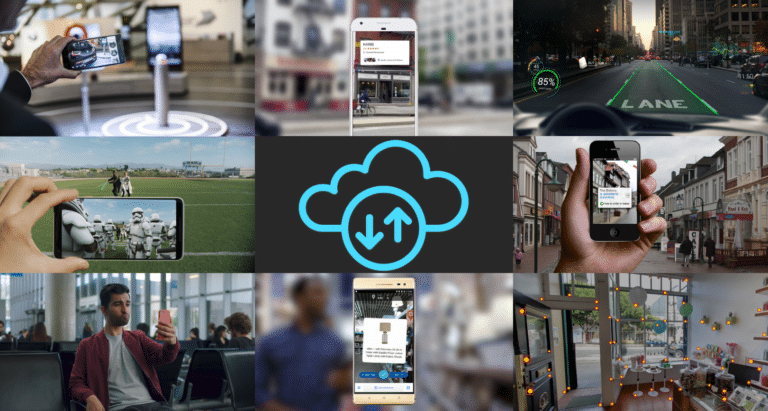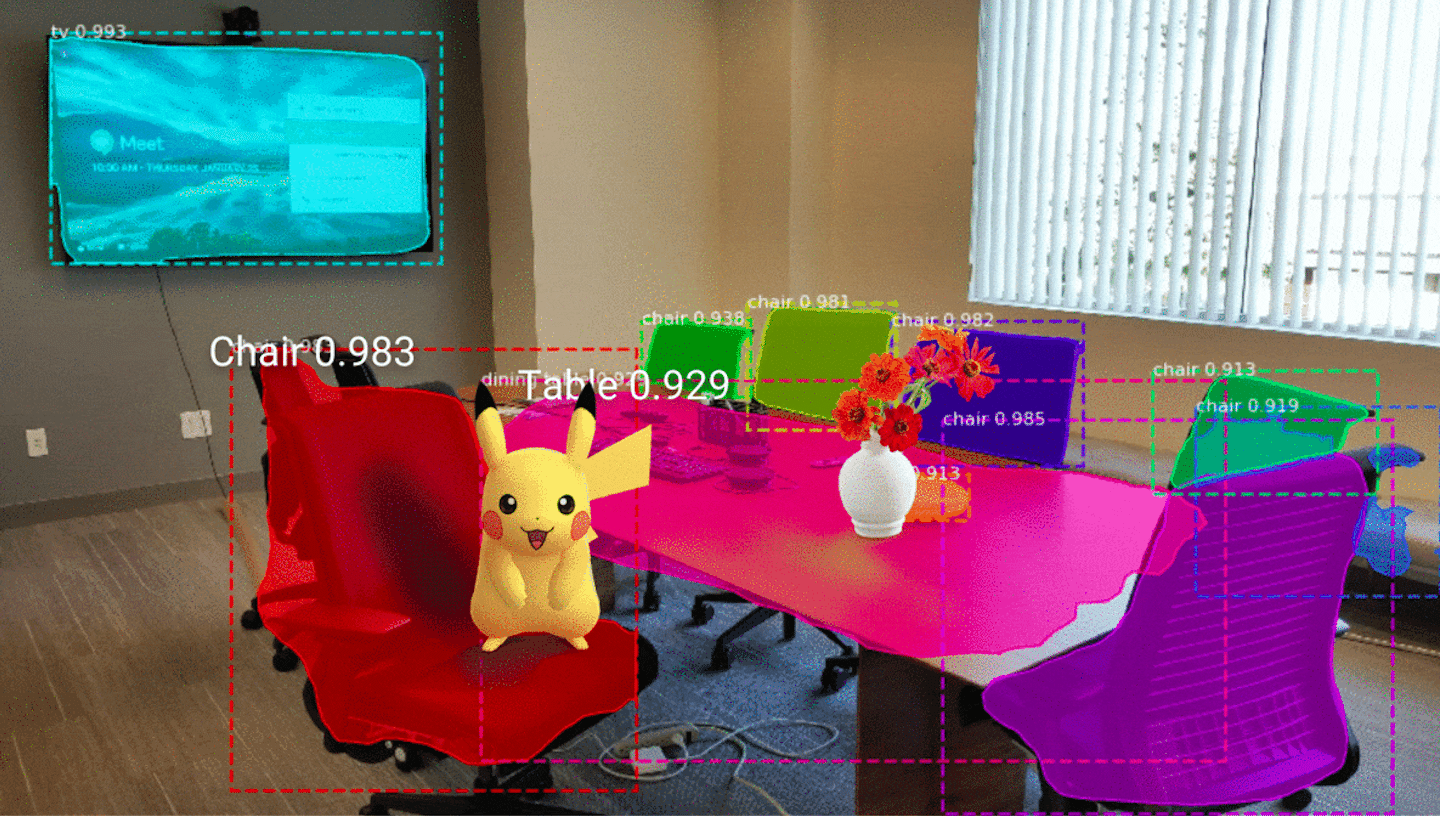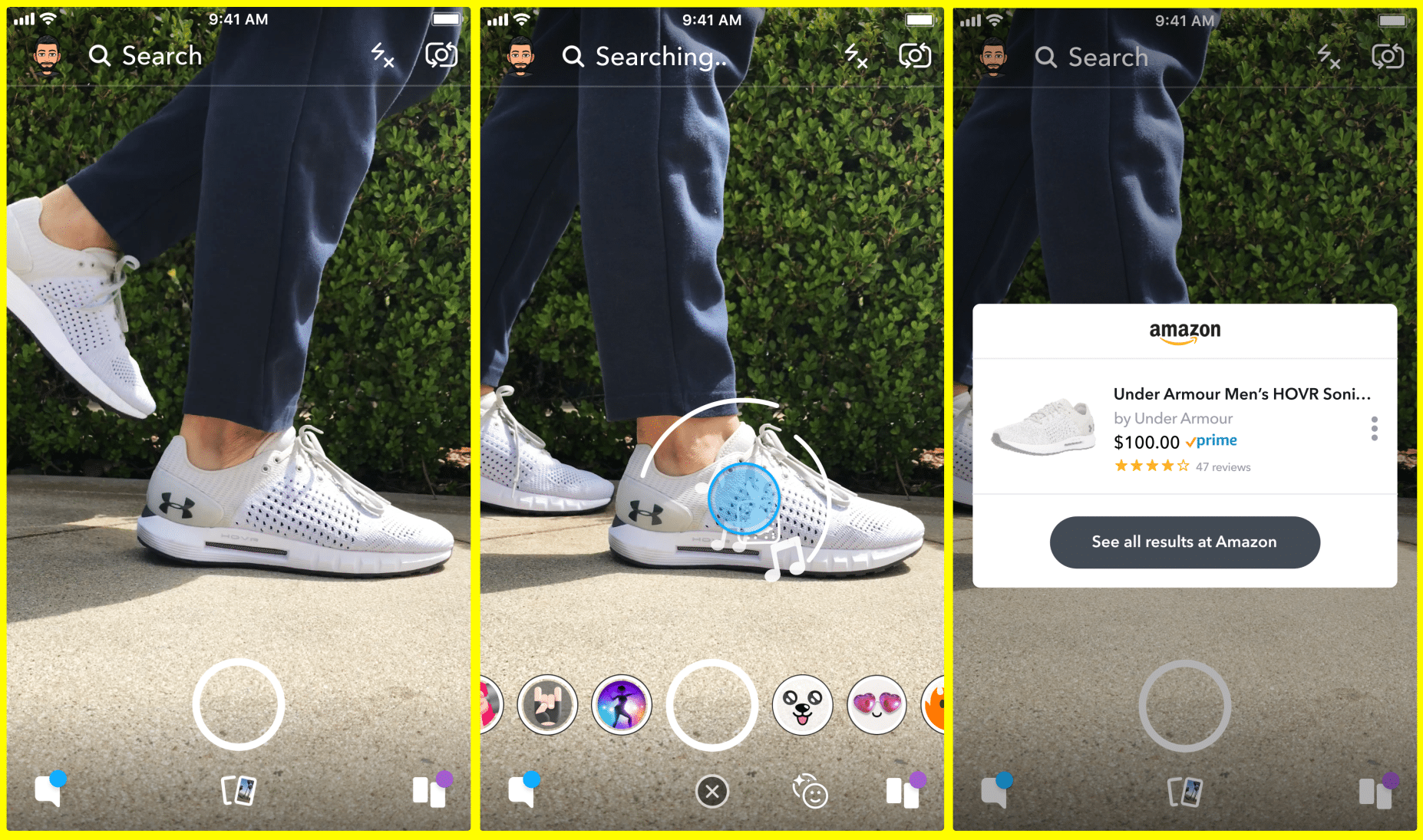
One of the most valuable areas of AR today is enabling technologies or “building blocks.” By democratizing AR creation, they include things like 3D graphics tools a la Adobe Aero. And they importantly include companies building the AR cloud.
For those unfamiliar, The AR cloud is a data resource that feeds AR devices remotely. That can include 3D spatial maps or object recognition blueprints that let AR devices geometrically and semantically understand surroundings. This enables them to infuse graphics accordingly.
It’s a key underpinning of the AR world we all envision, or that you may have seen in concept videos of AR graphics interacting with the real world. The mainstream expectation was that AR just works that way, but in reality it needs AR cloud support for planet-scale spatial data.

The Plurality
But one misnomer is the singularity of the term AR Cloud. Sort of like “the internet” is singular tense, the AR cloud will comprise a web-like collection of entities that coexist and compete with each other. There will be proprietary networks and open ones, just like the web.
Without getting into a philosophical debate about how the AR cloud should be gated and governed, there will be venerable consortiums for standards and interoperability across AR clouds. Magic Leap envisions thematic layers that are open and interoperable across platforms.
Meanwhile, parts of the AR cloud will inherit the walled garden structure that’s present in parts of today’s web and app ecosystems. This will be the case in enterprise security, and with tech giants who are paving the roads for AR, incentivized by their own different versions of an AR future.
For example, among tech giants tackling AR, the most “walled garden,” is Facebook. It will need secure data in a closed system for social information to be presented in 3D space. It’s everything from social status to facial recognition — a sort of 3D identity layer for the immersive web.

Playing to Their Strengths
AR clouds will map to the tech companies creating them. Sticking with Facebook, it could own a sort of 3D identity layer that builds from its ability to recognize faces. That could be a foundation to display permission-based layers of info about oneself in AR (e.g. relationship status).
Google has potentially stronger AR cloud foundations. Serving for 20 years as the world’s search engine, it has assembled several cloud assets including physical world geometry (maps), object recognition (images, Street View), and predictive data of what we want (knowledge graph).
Amazon’s AR cloud is a commerce layer. It has object recognition for billions of products, which makes it potentially the most directly-monetizable AR cloud of all. And it’s assembling Google-like intelligence of the things we want, given its longstanding blitz of AI and voice search.
Speaking of voice and AI, that’s Apple’s Achilles heel. But it’s building 3D spatial maps, and it owns the greatest portion of the tech stack. So it may be happy to cede AR cloud dominance to others (like it did with the web) while it accumulates massive wealth selling hardware.

The Field
In addition to the above players, Microsoft will position Azure as a backbone for secure AR cloud data for enterprises. Samsung is in the process of building its own AR cloud (Project Whare) and smaller players like Niantic and Magic Leap are working on their own versions.
But one underlying message is that the AR cloud will have lots of opportunities for data that fill gaps in various functional areas, such as spatial maps obtained from cars. As above, these will map to and extend from the competencies of existing tech players, and others that will emerge.
In fact, the emerging players will be advantaged. Not only do they have a native edge in product design, but they aren’t tied to legacy businesses, so they’re more nimble. They’re also not incentivized to walled gardens nor data collection, and can operate across platforms.
A data-collection conflict is present for anyone with ad revenue (Google, Facebook). Hardware players like Magic Leap and Apple are less conflicted. Going smaller, AR cloud startups like 6D.ai YouAR and Ubiqity6 are aligned with AR end-user needs and will find lots of room to add value.
As our friend and industry colleague Charlie Fink says, the world will be “painted with data” — also the title of his upcoming book.* There will be lots of colors and styles of paint needed, and lots of room for AR cloud innovators. The world is a big place after all.
For deeper XR data and intelligence, join ARtillry PRO and subscribe to the free AR Insider Weekly newsletter.
Disclosure: AR Insider has no financial stake in the companies mentioned in this post, nor received payment for its production. Disclosure and ethics policy can be seen here.
*Editor’s note: The author of this post is contributing a chapter for Fink’s upcoming book. See our review of his first book, Charlie Fink’s Metaverse.
